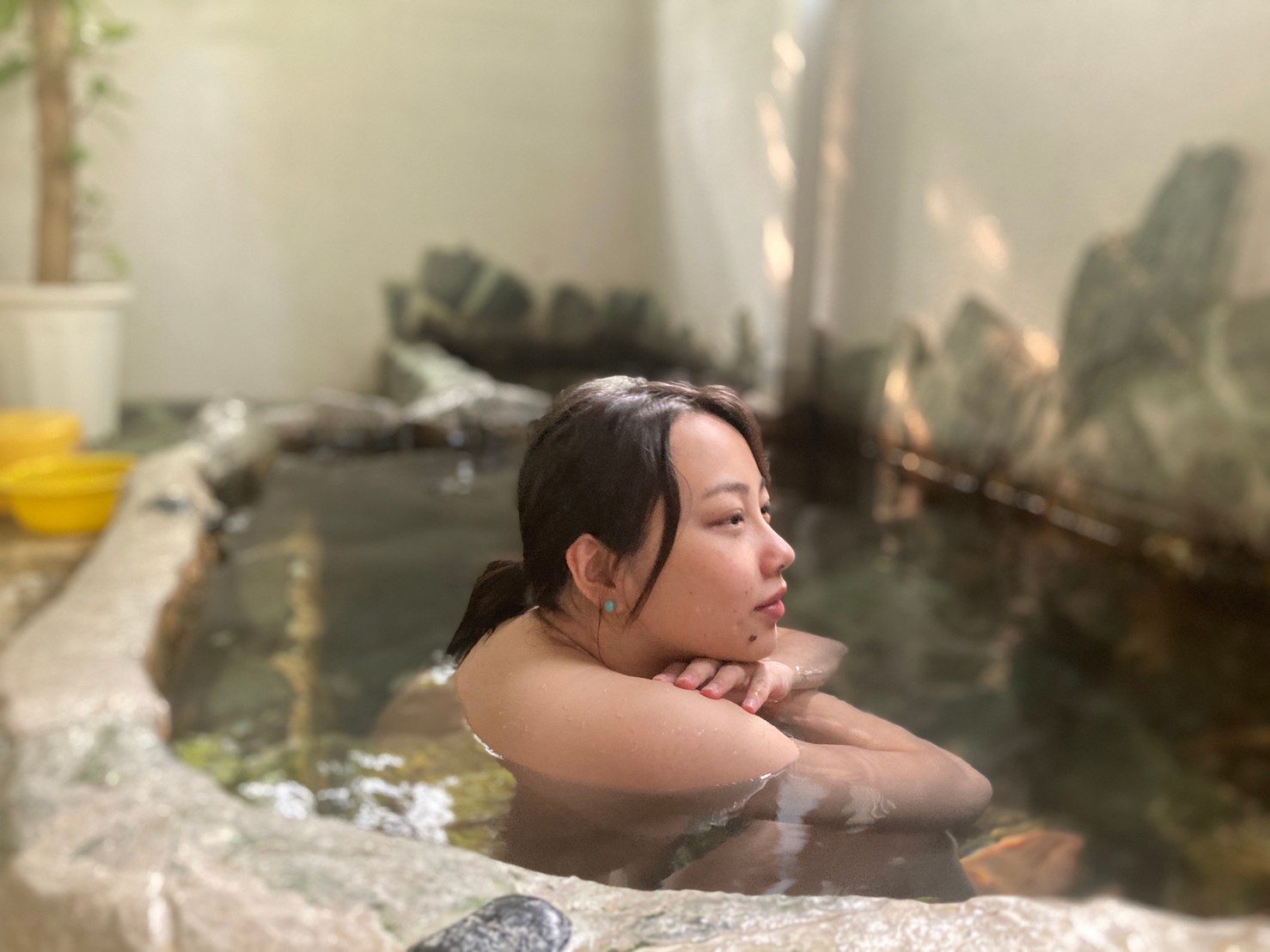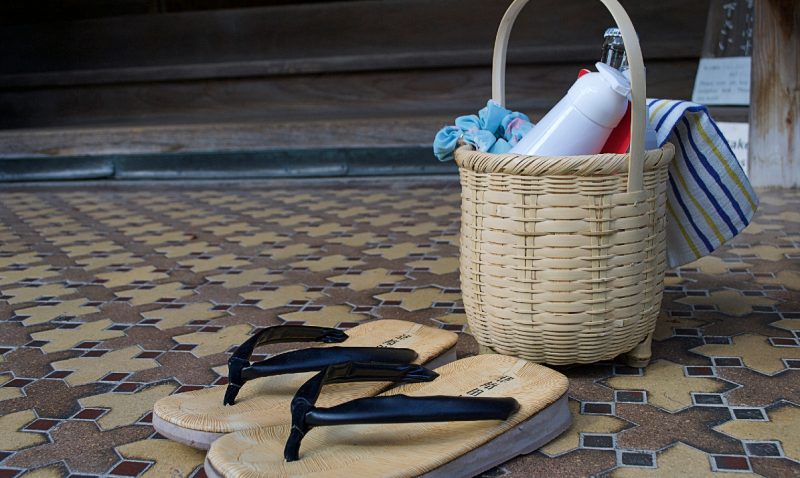
Wondering why Japanese love onsen so much? I’m onsen lover Haruka Styles writing to you from Beppu, Japan! In this article, I will explain why I and other Japanese can’t get enough of hot springs!
Onsen Is A Part Of Our Daily Lives
In Beppu, the hot spring capital of Japan, there’s onsen everywhere you look and the locals use the hot springs as one would a bath. Living each day like that with onsen, I finally wondered, “Why do I love onsen this much?” And then, “Why do Japanese people love onsen?”
I never thought about it before. Because, for us Japanese, hot springs are so familiar and commonplace. However, I can see why, from a foreigner’s perspective, it would be a mystery.

“Why are the Japanese fond of onsen??”
Of course, whether it’s in hot springs, sento, or their home bathtub, Japanese bathe at least once a day. As for how often Japanese go to onsen, that depends on the person. Beppu citizens sometimes go as many as three times a day. But no matter how many times we go, our relationship with onsen is unique and deep. Through this article, I hope to unravel this mystery and give everyone a clearer understanding of Japanese hot springs!
I believe the answer lies in 3 key words: “nature,” “history,” and “communication.”

3 Reasons Why Japanese Love Onsen
Nature: The Volcanic Country of Japan and Its Climate
Japan since long ago has been known as a country where many natural disasters occur.
Along with “tsunami,” a word now understood all over the world, earthquakes and typhoons are one part of our everyday lives. We often consider disasters as something bad, but their existence has other effects on Japan. It is because Japan is a volcanic archipelago that it can be home to the largest amount of hot spring sources in the world. The more sources there are, the more onsen exist.

To read more about the process of how onsen form, you can read How Onsen Works: A Geothermal Gift.
Furthermore, the rainy season, typhoons, and snowfall all serve as water resources. We swim in cold water on sweltering summer days and soak in hot water in the bitter winter.
In Beppu, too, hot springs can be found near the volcano mouths.

This one is called Tsukahara Onsen Kako no Izumi . It’s an onsen where you can enjoy the fresh greenery in the summer, and the changing of the leaves in autumn. You can read more about Tsukahara Onsen Kako no Izumi here.
I believe it is thanks to this climate that we have been able to live side by side with onsen for so long, and that onsen culture has flourished.

History: The Long Relationship Between the Japanese and Onsen
It is well known that onsen has been an integral part of Japanese culture for centuries. This long connection between Japanese culture and onsen has been well documented.

For example, there is a book called Izumonokunifudoki from the year 733. It documents the daily life and culture of the people of that time period. In regards to the history of Japanese onsen, it contains the following passage:
“There gushed forth a hot spring by the riverside of the village, and area by the riverside was a prosperous place. From locals to tourists, regardless of age or gender, everyone gathered there to use the onsen. It was said that if you entered the onsen once, you would become beautiful, and if you entered twice, any illness would be cured. “

From this, we can guess what Japanese bathing culture looked like 1,300 years ago and why Japanese fell in love with onsen. As it were, we can understand how invaluable the existence of hot springs was to people who lived in a time with little access to cosmetics and medical supplies. To this day, hot spring healing culture continues to utilize these onsen benefits to the human body and mind.

Communication: A Place To Open Up
As we now know, from early history, Japanese considered onsen a place where they could obtain beauty and cure illness. Thus, people made onsen part of daily life and used them quite often.
With people gathering to onsen daily, it naturally became a place to socialize. Even perhaps more than anything else, it can be said that the time spent soaking in the onsen is a time to communicate with others. Feeling nice in the pleasant warmth of the hot spring makes it easier for people to open up and become more friendly. Indeed, onsen is the place to feel good both physically and mentally!

I also go to onsen to relieve the fatigue of my day.
And when I do, as the warm waters heal me, I have lively conversations with the people soaking with me. I believe that onsen is a place where it becomes easier to communicate with others.
Embarrassed At Onsen?
By the way, some of my foreign friends have an aversion to hot springs because they do not want to take off their clothes in public. Certainly, I can understand why they find onsen embarrassing. After all, there are few public baths in their countries, and many facilities require swimwear.

For us Japanese, there is no sense of embarrassment. What I hope to convey is that hot springs are not such “facilities” but “places of communication.” I think that the true value of hot springs can be seen beyond “embarrassment.”
For example, imagine getting on to an elevator, or entering a store, and someone greets you with a “Hi!” And by that simple greeting, you knew that that space was not a lonely one.
Likewise, at the hot springs in Beppu, we always exchange greetings such as “Konbanwa,” “Sayonara,” and “Oyasuminasai.”
To find out how to effectively communicate in Japanese at onsen, please refer to our guide here.

By doing so, we know we are not alone. We feel like we’re connected.
Beyond the feeling of being embarrassed, try viewing onsen as a place to enjoy communication, and you will be impressed with the charm of the hot springs! Beppu is home to many onsen that are particularly friendly to foreigners and those with tattoos.
You can read about foreign students’ great experiences with locals in onsen here and tattoo-friendly onsen here.
I hope this article explained why Japanese love onsen. We hope you fall in love with Japanese hot springs too! And if you do, please come share a wonderful onsen experience in Beppu!

How to get to Beppu Onsen where Ichinoide, Tsukahara, Sabo Takasaki, and Kotobuki Onsen are located.


